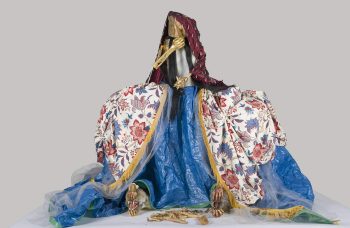Vexillology, you know, the art and study of flag design, ok, maybe you don’t know that, but the field plays an important role in the representation of countries, states, and territories as a way to represent its people in a small, deceivingly complex manner. However, representing a large body of people with one, sometimes outdated, flag is difficult – and getting a flag changed can take an act of god. This hasn’t stopped Mississippi-based artist Laurin Stennis from trying, though, and it seems she has some momentum in changed the banner that represents her state and its people.
For those that don’t know, Mississippi has a tumultuous history to say the least. The Mississippi Civil Rights Museum (MCRM), which opened last year, tells the story of the southern state and the oppression that countless people of colour were met with, sometimes to the point of death. When admitted to the Union in 1817, Mississippi was a slave state and at times, the slave population outnumbered the freed population. It was the second state to secede from the Union, following South Carolina, to join the Confederate States in 1861. Like many slave-holding states, lynching became a form of slave control and continued well into the 20th century – the last of which took place in Alabama in 1981 by the KKK. The MCRM takes visitors through a timeline of more than 580 lynchings alone. This is all to show one side of Mississippi’s difficult history.

Stennis hasn’t tried to cover up this past – her grandfather was a democratic politician in Mississippi who defended segregation – but she has decided that the flag wasn’t one that accurately represented the state. At the moment, Mississippi’s flag has a field of blue, red, and white horizontal bars that exactly inverse the Netherland’s tricolour. However, as a tribute to Mississippi’s Confederate heritage, in the top left corner, there is a square displaying the Confederate flag or the flag most often associated with the Confederacy.
The flag created by Stennis, gaining recognition as the ‘Stennis Flag,’ tells Mississippi’s story with an emphasis on different key points in its history. The new flag bears a white field bookended by a red vertical strip at the left and right sides. At the centre, there is a large blue star showing the inverse of the ‘Bonnie Blue Flag’ which the state used when it seceded. ‘I inverted it,‘ Stennis told The Washington Post, ‘because I don’t celebrate that dark moment in our history [referring to the state’s secession], but it has to be acknowledged.’ Around that star there is a halo of 20 blue stars. This points to when Mississippi joined the Union to become the 20th state.
The artist, who can usually be found making woodcut prints of various this, including armadillos, in her downtown Jackson studio isn’t the campaigning type. She didn’t want to lead the movement to change the flag but she simply couldn’t bear the meaning behind the state’s flag, which she called ‘a blinking neon sign of negativity.’ She does, though, have support from a number of people of all creeds in her community for the flag. Mississippi Rep. Kathy Sykes filed the bill to officially change the state’s banner to the ‘Stennis Flag.’ Though everyone isn’t enthused by the movement, it most likely won’t be a quick change. If Stennis’ flag does become the state flag, though, it might give people more of a reason to fly their flag proudly.





